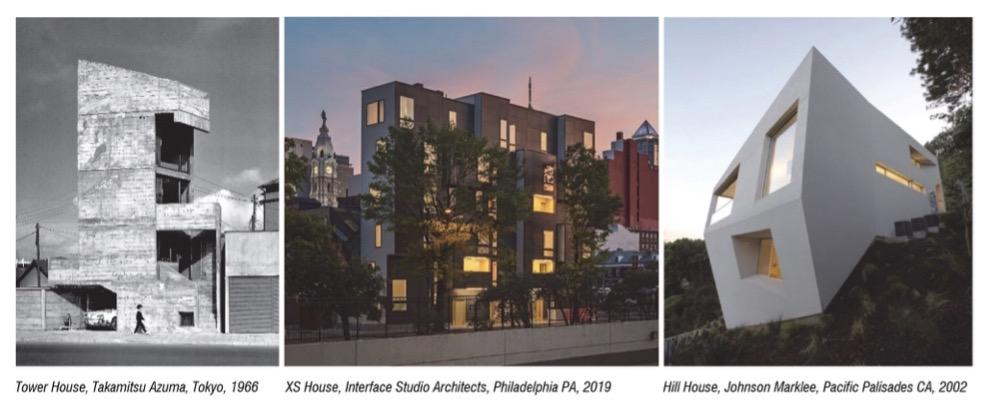ARC 327R / ARC 386M
Wed 9:00am – 12:00pm, SUT 3.112
Open to all ARC students, all CRP students, all U D students, and Arch Studies minors
Francisco Gomes: fgomes@utexas.edu
The Evolving Policy: Unusual Buildings seminar examines the intersection of the regulatory policy governing building projects and the design possibilities of urban sites. The class will focus on smaller properties where the inefficiencies of real estate (lumpy and illiquid markets, high transaction costs) are amplified by constrained and irregular sites. These situations enable both design ambition and the creation of economic value by informed participants.
Policy in the built environment includes zoning and other development ordinances, building codes, environmental protections, and private land use restrictions. Like all regulatory mechanisms, these imperatives are social constructs. In North America, development ordinances and building codes are currently experiencing rapid evolution in response to our collective desires, including less auto-oriented development patterns, inadequate housing supply, and lower carbon-intensity construction methods. Policy rulesets both create and respond to site conditions; for example, lot dimensions and required building yard setbacks (or other open space minima) are tuned to work in concert, allowing both useful and economically productive lots. Where conditions stray from the normative situations these rules anticipate, whether due to site circumstances such as extreme topography, stormwater flows, residual property dimensions, atypical uses, or a myriad of other situations that occur in the complexities of the real world, opportunities to create social, economic, and design value abound. Especially when conditions are not normative, having the knowledge and skills to analyze the potential of a parcel of land is important for anyone engaging in the production of the built environment. Student projects for the Spring 2026 edition of the class will focus on residential development driven by compact footprints but considerable vertical and sectional latitude.


